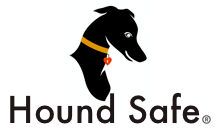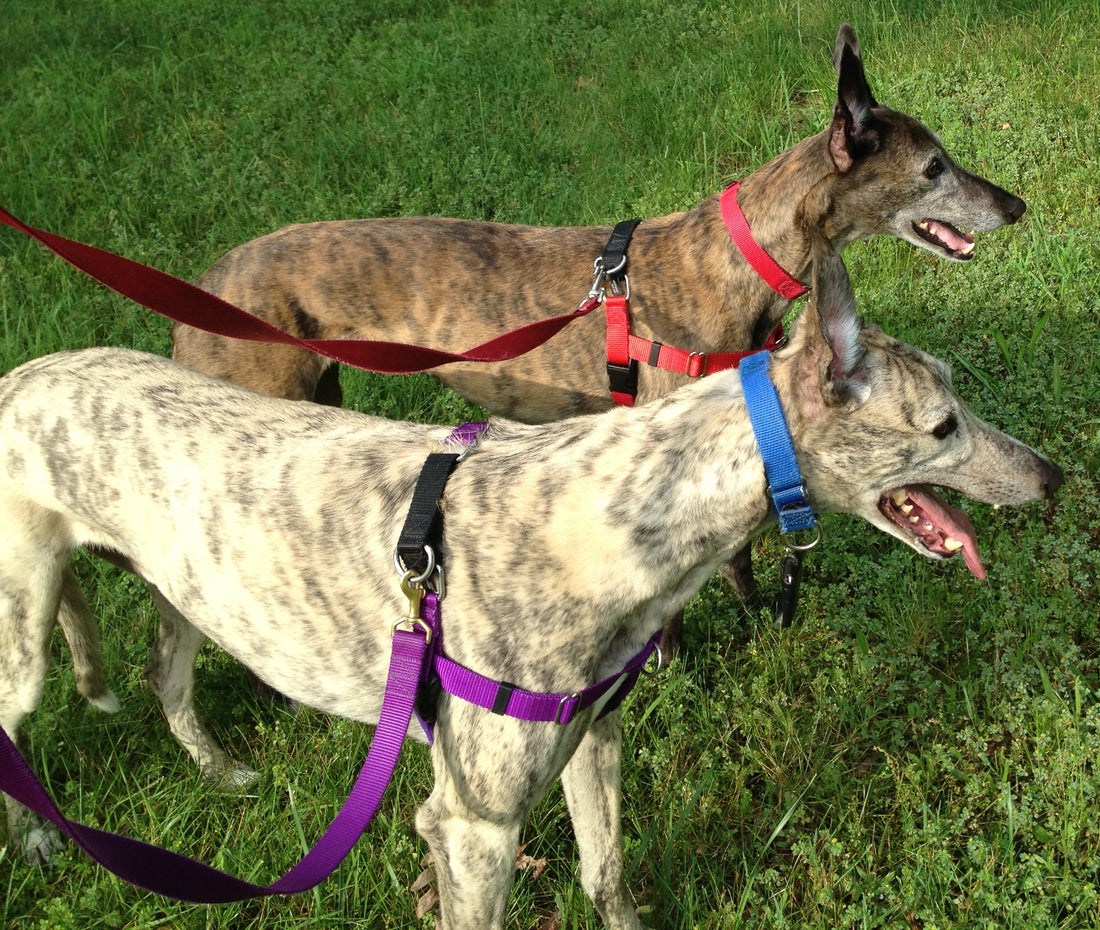(Photo: Shop co-founders Capri (top) and Ajax (below) enjoying walkies on a nice spring day.)
Over the many years I've been walking my dogs, I've had some observations and developed some thoughts and opinions about that really important bit of safety gear. I even call it that when leashing up my dogs sometimes! "No walkies without your safety gear!"
The first thing I've noticed is that some dogs are more intuitive about how the leash works than other dogs. Using my Loki for an example, he knows that it's an attachment between me and him, so he never gets wrapped around a mailbox or tree. He also fixes himself when the leash gets behind his front foot, unless I'm not paying attention and it comes up behind his elbow where he can't get his foot over it again. Then we work together to put things right; I give him slack, and he steps over. By comparison, my beloved Capri seemed to understand the leash but always preferred that I fix it for her when it got between her feet. She would stand there, one foot raised but still hooked over the leash and wait for me to fix it. And yet another comparison, our silly Freyja doesn't seem to pay much attention to it at all, so if she steps over it, she will keep going until it's wound beneath and maybe around two or even three legs! And once or twice she's gotten her leash tangled around Loki's legs because she just doesn't stop.
Which reminds me that when we're walking, an important part of my job is leash management. It's my job to keep it out from under their feet, not let one dog hamstring another with it (or worse, a dog hamstring himself!) and to teach them how to not get wrapped around poles. I'm a bit old fashioned, perhaps, because I don't use an extendable leash. I use 6-ft nylon webbing leashes like you see in the picture above. I actually enjoy being an active partner with my dogs during our walks, and using regular leashes means i need to do more leash management.
Just as dogs are very sensitive to how much tension is on the leash, I've become accustomed to that as well. I can tell when a dog that is trailing behind me stops to sniff something, or has gotten an acorn in her paw and is limping just by the feel of the leash in my hand. My dogs never have to limp more than about two steps before I turn back and check their paws. I definitely don't want them to come up lame because they had to walk a block with something nasty like an acorn cup or gum tree seed pod (sticky-ball) stuck between their toes.
Leashes are also really critical for communicating with your dog when meeting other people or dogs. Good trainers will coach you about not pulling your dog back when meeting a stranger because the tension on the leash communicates that strangers are bad. Even if that's not the message the dog learns, I'm pretty sure it contributes to anxiety, stress and maybe even frustration which can then accelerate over time into leash aggression. In Part II, I'll share my approach for teaching a new dog not to be leash reactive. And in Part III, I'll explain more about my hamstring comment above, as I've seen a fair number of people yell at their dogs when this happens, and it's not the dog's fault - he's just confused.
Have you come up with any leash thoughts? I'd love to hear them!

